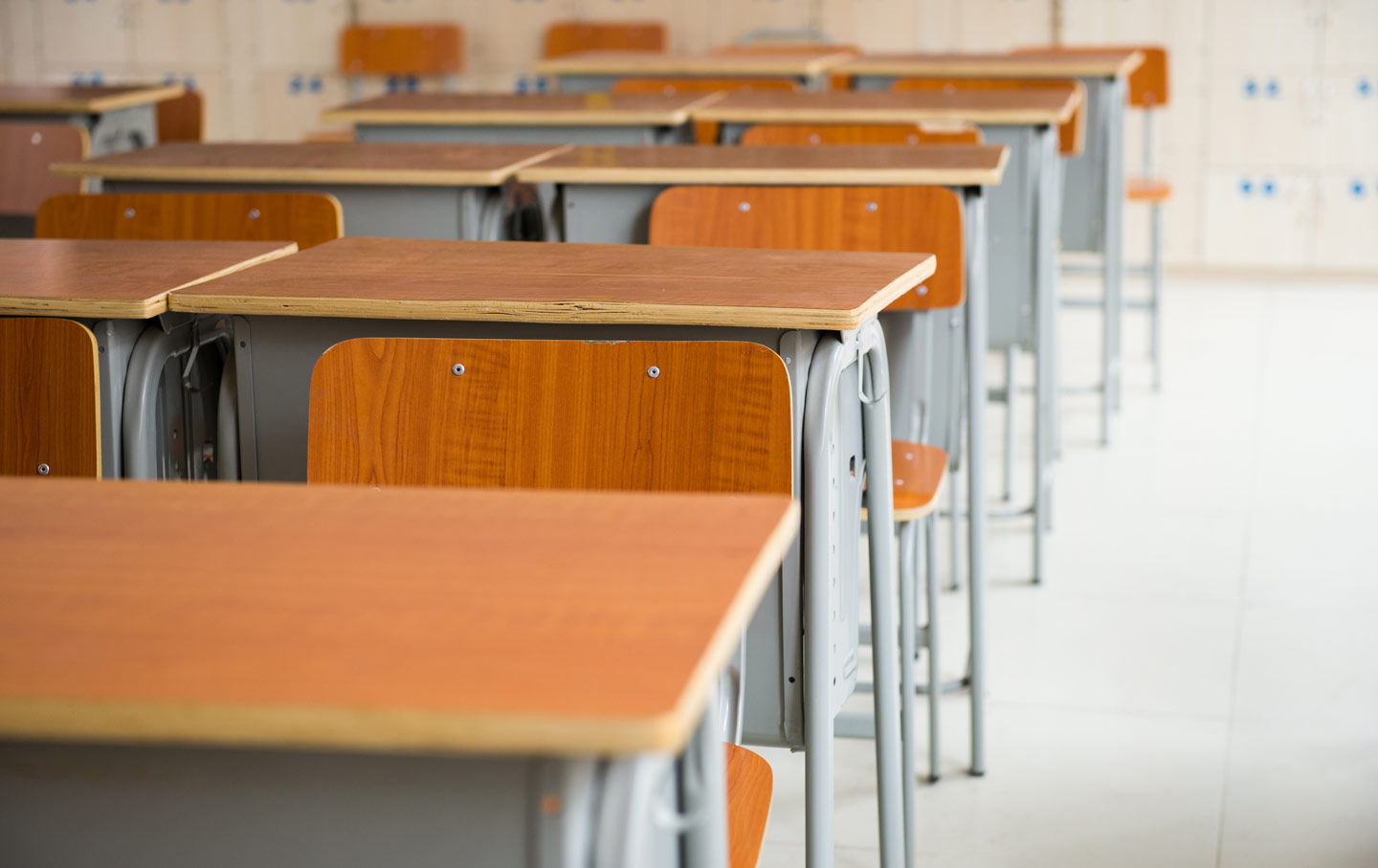
A few weeks after The New York Times released a controversial video of a Success Academy Charter School teacher lashing out at a student, New York City’s deep-pocketed charter school advocates are looking to shift the public narrative on who is committing violence in city schools.
Over the last few weeks, Families for Excellent Schools, a charter school lobbying and advocacy group with close ties to Success Academy, has placed TV ads, held a press conference, and taken to social media, claiming New York City public schools are in a violent “state of emergency.” The charter school campaign appears to be a response to the public backlash that Success Academy has received for its controversial disciplinary approach.
Taking state data, which includes “violent” incidents not involving the police, Families for Excellent Schools asserts that between 2014 and 2015 schools suffered a 23 percent uptick in violence. The public action was meant to undermine New York Mayor Bill de Blasio, who recently claimed school violence has gone down, thanks to his administration’s softer disciplinary approach.
A Nation analysis of the charter school group’s data, however, suggests the move may backfire, since the numbers also show that charter schools themselves reported a far higher spike in incidents of school violence, 54 percent, more than double that of the public school average between the 2014 and 2015 school years.
Breaking the data down further, The Nation also found that while NYC public schools, perhaps responding to the district’s disciplinary reforms, actually dropped in nonviolent offenses like “criminal mischief” and “other disruptive incidents” at -6 percent and -23 percent, respectively, charter schools had a 65 percent surge in reported incidents of “criminal mischief” and a 33 percent surge in “other disruptive incidents.” Notably, charter schools also had far higher reported surges in drug and weapons possession incidents, at 53 percent and 27 percent respectively, whereas public schools only had 5 percent and 9 percent jumps for the same categories.
New York City charter school students represent a relatively small amount of the city’s overall population, and therefore make up only 4 percent of total violent incidents in New York City schools, but these drastic disparities raise questions about how charter schools’ controversial disciplinary cultures relate to the dramatic increase in reported school violence.
Brenda Shufelt, a recently retired librarian who served public school and Success Academy Charter School students at a colocated school library in Harlem, said that as charter schools rapidly expand, they may be taking in more high-needs kids, many of whom cannot conform to one-size-fits-all disciplinary approaches.
“In my experience, what would often happen is that charter school students would be so rigidly controlled that the kids would periodically blow up,” says Shufelt. “At PS 30, some of our kids would have meltdowns, usually because of problems at home, but I never saw kids melt down in the way they did in charter schools. They were just so despairing, feeling like they could not do this. I was told by two custodians, they had never had so much vomit to clean up from kindergarten and elementary classes.”
Examining the 10 charter schools with the highest reported incidents of violence in 2014 and 2015, The Nation also found that reported incidents escalated 485 percent last year over the previous year, more than four times faster than the growth of violent incidents for public schools of the same category.
Of the top six charter school sites with the most reported growth in incidents of violence from 2014 to 2015, four were KIPP charter schools, part of a nationally heralded charter chain that has 11 locations in New York. In recent years, KIPP has drawn headlines for its disciplinary regimen, which often includes precise control of students’ physical movements, intricate behavioral systems of reward and punishment, and enforced silence throughout school hallways. In 2013, a KIPP school in Manhattan made news, after a kindergartner and first grader had anxiety attacks, triggered by the school’s practice of repeatedly locking students in custom-designed time-out closets. KIPP refused to end the practice after the controversy and did not respond to Nation inquiries about the spike in reported incidents.*
Some experts, however, caution that charter school spike in “violent” incidents could be more a reflection of these schools’ “zero tolerance” disciplinary policies than students’ actual behavior. “The stricter the behavior regimens are, the more likely students are to be reported as violent when they don’t conform,” says Leonie Haimson of the advocacy group Class Size Matters.
“These policies could not just be responding to violent behavior but actually be coming to define and shape what counts as criminal, thus building into the school to prison pipeline,” says Celina Su, a professor of political science at Brooklyn College. “There’s also a real racial component to this. Look at where these draconian policies are being implemented and who do they have in mind. Who is allowed to play and who is allowed to make mistakes and learn from them?”
Zakiyah Ansari, a parent advocate with the Alliance for Quality Education, which receives partial funding from labor, is skeptical of both Families for Excellent Schools’ numbers and its intentions.
“State Education Department officials have conceded that the data system does not accurately measure safety and school climate and are undergoing an overhaul of the system because there it has little credibility,” says Ansari. “FES is clearly aware that these numbers can’t be trusted, but they are using them to paint black and brown children that go to public schools as dangerous. The harsh policies at KIPP, Success Academy, and other charter chains are abusive towards students, and the FES campaign is a deceptive attack on restorative justice approaches which actually make schools safer.”
FES did not respond to a request for comment.
*A spokesperson for KIPP, responding after publication, claims the organization has not locked elementary school students in its padded “calm-down room” closets since January 2014.
George JosephTwitterGeorge Joseph is a reporting fellow at Demos.